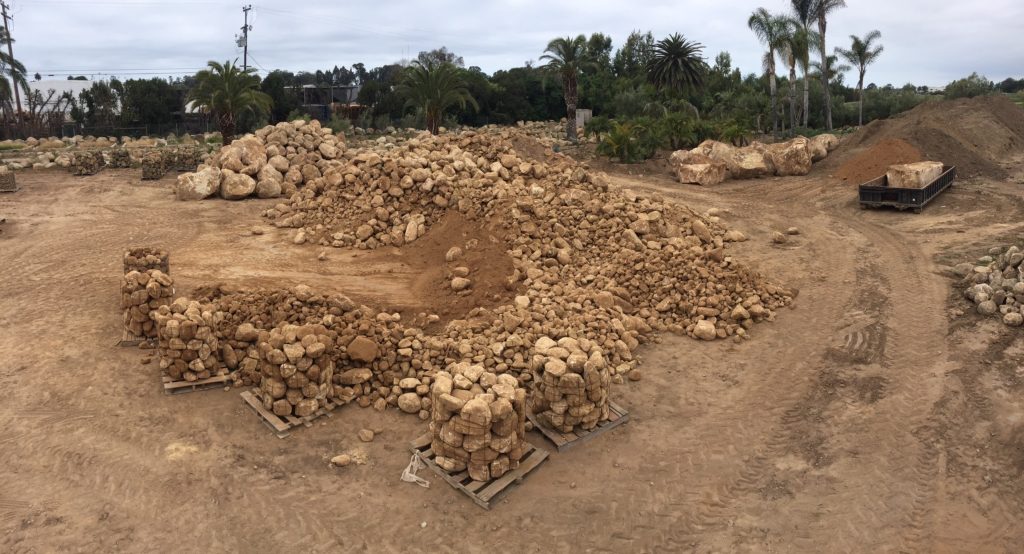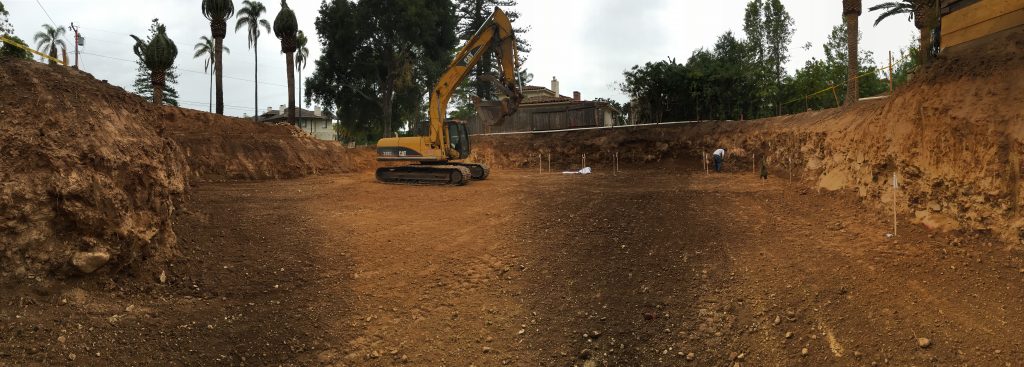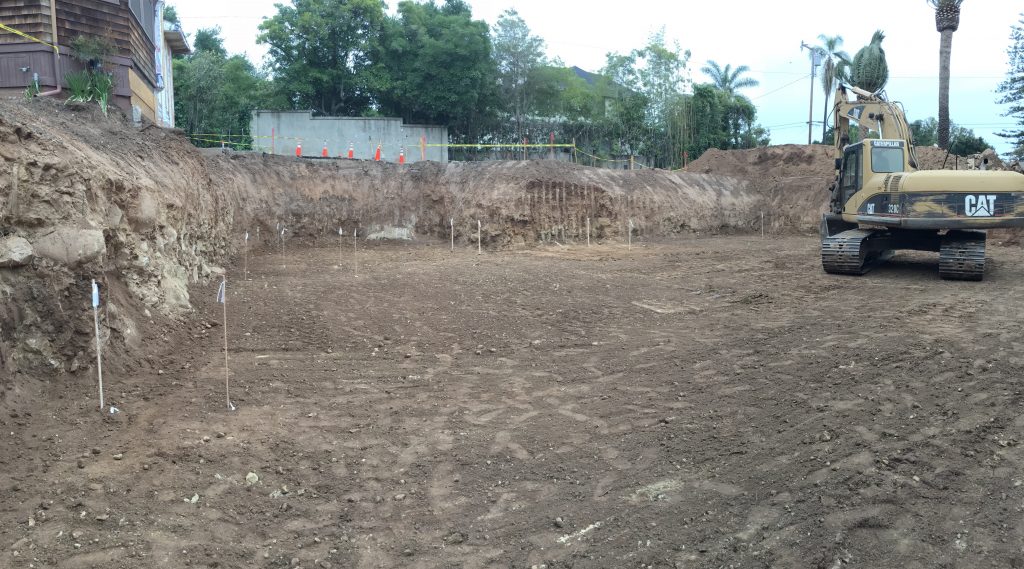Excavation took about twice as long as expected due to all the rocks we encountered. The amount of rock (beautiful, valuable, Santa Barbara sandstone) was just astounding. We didn’t realize (despite seeing the huge pile grow) how much rock we pulled out until we did a rough estimation of the weight of all the rock we excavated – about 1,000 tons of it. Approximately 40% of everything we excavated was rock. Here is our pile at the stone yard.

The largest was about 10′ x 8′ and the second largest was 8′ x 6′. We had a couple of dozen rocks ranging between 4′ and 6′ and probably a hundred or more in the 3′ range. We are going to use this rock to do the stonework on the house and the hardscape walls on the property.
By any standard, the excavated hole is big.

To the eye, it actually looked bigger before they added back soil on the bottom. The idea is to have equal compaction of soil all around the property so that any settling will happen equally everywhere, rather than in a soft spot. To do this, they over-excavate by an additional 3′, and then add the (well-sifted) soil back in and compact it down.
At every step, a soils engineer tests the soil to make sure all is well. When the hole was about 2/3 of its finished size, it reached a maximum of 15′, which made it look simply huge. Now that 3′ of soil has been added back, it looks big, but not cavernous like before.
The final step was mapping out the foundation line for the concrete contractors, who start tomorrow. You can see all the stakes in this picture.
